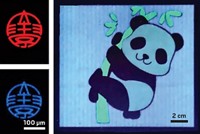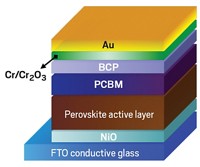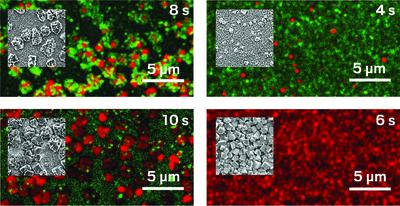Advertisement
Grab your lab coat. Let's get started
Welcome!
Welcome!
Create an account below to get 6 C&EN articles per month, receive newsletters and more - all free.
It seems this is your first time logging in online. Please enter the following information to continue.
As an ACS member you automatically get access to this site. All we need is few more details to create your reading experience.
Not you? Sign in with a different account.
Not you? Sign in with a different account.
ERROR 1
ERROR 1
ERROR 2
ERROR 2
ERROR 2
ERROR 2
ERROR 2
Password and Confirm password must match.
If you have an ACS member number, please enter it here so we can link this account to your membership. (optional)
ERROR 2
ACS values your privacy. By submitting your information, you are gaining access to C&EN and subscribing to our weekly newsletter. We use the information you provide to make your reading experience better, and we will never sell your data to third party members.
Materials
Zinc Oxide Nanowire Solar Cells Resemble Caterpillars
Materials: Spiky layers of nanowires improve efficiency of zinc oxide-based solar cells
by Corinna Wu
July 9, 2012

Dye-sensitized solar cells (DSSCs) are cheap, thin, flexible, and easy to manufacture. As a result, many researchers work with them instead of with other, higher-efficiency solar cell technologies that use solid-state semiconductors such as silicon or gallium arsenide. Scientists have been interested in building DSSCs out of the semiconductor zinc oxide because the material holds attractive properties such as transparency and a simple synthesis process. But the efficiencies of such solar cells have been low.
Now chemist Yulin Deng of Georgia Institute of Technology and his colleagues have found a way to densely pack zinc oxide nanowires in a solar cell that significantly improves its efficiency (Nano Lett., DOI: 10.1021/nl301407b).
Deng’s team grew the nanowires in caterpillar-like arrays, with multiple nanowires branching from a central, linear core. The key to their method lay in sequentially seeding the growth of dense nanowire structures. They used a technique called electrospinning to deposit fine strands of zinc oxide on top of an initially deposited nanowire array. The strands serve as seeds for the growth of the nanowires, which then branch out in all directions.
Previously, researchers had used zinc oxide nanoparticles as seeds, which resulted in less growth because they tended to fall into the empty spaces between the nanowires instead of perching on top. With the new method, Deng says, “you can increase the number of layers and easily control the total thickness until the light is 100% absorbed.”
With a five-layer solar cell, the researchers achieved 5.20% light-to-electricity efficiency, improving upon the previously reported 0.1 to 3% efficiencies for DSSCs made of zinc oxide nanowires.
In comparison, DSSCs made from more commonly used titanium dioxide have achieved 12.3% efficiency (Science, DOI: 10.1126/science.1209688). Deng thinks that, with more-densely packed zinc oxide nanowires, his DSSCs can perform as well as titanium dioxide devices. “But,” he admits, “we have a long way to go.”





Join the conversation
Contact the reporter
Submit a Letter to the Editor for publication
Engage with us on Twitter